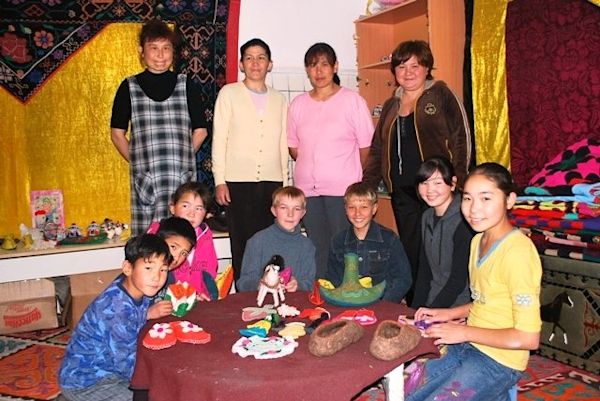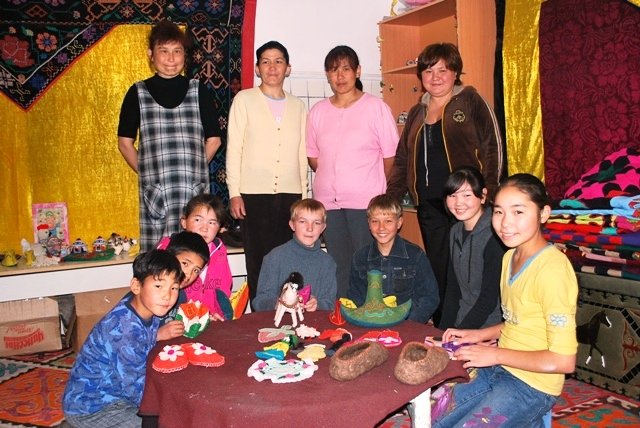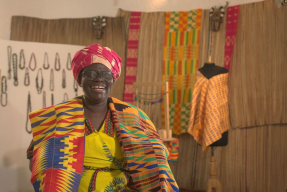Behind The Curtain – Getting a New MFI on the Kiva Platform
June 25, 2009

A Kiva entrepreneur in Kyrgyzstan who has also created a Center of Temporary Stay for Orphaned Children using her own funds and resources. Click to learn more.
By Boris Mordkovich, KF8 – Kyrgyzstan
After doing a Kiva Fellowship in Tajikistan during February and March of this year, I’ve returned to Kiva this summer to do another placement in Kyrgyzstan.
Within the first two weeks at the micro-finance institution, it became very clear that this placement will be quite different from the first one. It’s actually quite amazing how much things can vary from one MFI to the other, from one country to another.
The main difference between the two placements is that the first MFI I was working with in Tajikistan was already on the Kiva platform for over a year when I arrived. They already had an established system in place for collecting data and posting profiles of their borrowers on the website. And while there was some room for improvements here and there, as a whole, it functioned very well.
My new, current placement – in Kyrgyzstan – is with a brand-new, pilot partner that’s just getting started with Kiva. It’s very exciting to be a part of the start-up phase and build the processes block by block, but it poses its own set of challenges and makes you appreciate how complex the system really is.
On the surface, as all of you know, it appears relatively simple – a lender submits a payment through PayPal and the money eventually gets to the borrower (although in most cases the MFI “fronts” the funds in advance of the loan getting funded on Kiva). But underneath this seemingly simple and clear process is the work of literally hundreds of people and very interesting “supply-chain”.
The Challenges
When a new MFI joins the Kiva family, one of the first things they need to do is train their loan officers to collect a new set of information necessary for the Kiva stories, since much of this information is not collected or recorded previously. When your organization has several hundred loan officers and growing daily, training the staff is a challenge. Particularly because of two reasons. For one, many loan officers handle a large case load as it is, so it’s difficult to convince them on the merits of doing additional paperwork. Secondly, oftentimes, it’s difficult to convey to them that somebody across the world is actually interested that their client has bought a cow or a chicken and so on. When you deal with these things day in and day out, it doesn’t seem remarkable or worthy of reporting.
But even when you get the loan officers onboard, you’ve only won half of the battle.
The second challenge is the transfer of the information. Living in the U.S., it’s difficult to realize how the flow of information changes when Internet and computers are taken out of the picture. My MFI, like many others, has several dozen branches spread out all over the country. So how do you get the information on the clients from these far-away branches into the headquarters where a Kiva coordinator can write and post the story on Kiva?
We’re lucky that Kyrgyzstan has a fairly good Internet connectivity across the country – most other Kiva partners do not. But even with that connectivity, it’s problematic because peoople are not used to doing their work on the computers and converting the data from paper forms into electronic format takes an extraordinary amount of time, effort and training.
All of these are solvable issues – so I have no doubts that we’ll make it work. But when you consider all of the challenges, number of people involved all over the world, the varying environments and operations, it’s simply amazing that the system as a whole works, and works so well.
Boris Mordkovich is currently doing his 2nd Kiva Fellowship serving with Mol Bulak Finance, the first Kiva Partner in Kyrgyzstan. Previously having completed his first placement in Tajikistan, he is just getting used to consuming enormous amounts of tea, bread and meat on a daily basis and life in Central Asia.
If you’d like to learn more about Kyrgyzstan and support entrepreneurs in that region, please check out and join our new lending team – Supporters of Kyrgyzstan – http://kiva.org/team/kyrgyzstan. Team members will get special updates and information from the Kiva Fellow and the MFI.
/>













